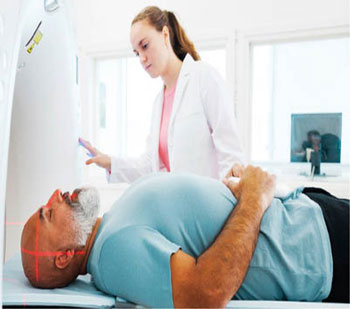Patients diagnosed with lung cancer may have better long-term survival rates when it’s caught early by low-dose computerized tomography (CT) scans, a new study suggests. The U.S. Preventive Services Task Force recom-mends annual lung cancer screening with low-dose CT in adults ages 50 to 80 years who have a 20 pack-year smoking history, which equals at least a pack a day for 20 years, and who currently smoke or have quit within the past 15 years. But less than 6 percent of people eligible for lung cancer screening get it, according to the American Lung Association.
For the new study, researchers examined data on 20-year survival rates for 1,285 patients diagnosed with early-stage lung cancer after undergoing screening with low-dose CT scans.
Overall, the 20-year survival rate was 80 percent, according to preliminary study findings presented at the annual meeting of the Radiological Society of North America.
Survival outcomes were better for certain types of patients. Every single one of the 139 participants with nonsolid cancerous lung nodules and the 155 participants with nodules that had a partly solid consistency survived through the end of the 20-year study period. And even people with harder to treat completely solid nodules had a 20-year survival rate of 73 percent.
“While screening doesn’t prevent cancers from oc-curring, it is an important tool in identifying lung cancers in their early stage when they can be surgi-cally removed,” lead study author Claudia Henschke, PhD, MD, director of the early lung and cardiac action program at the Icahn School of Medicine at Mount Sinai in New York City, said in a statement.
“Ultimately, anyone interested in being screened needs to know that if they are unfortunate enough to develop lung cancer, it can be cured if found early.”
While treatments of more advanced cancers with targeted therapy and immunotherapy have come a long way, the best tool against lung cancer deaths is early diagnosis through low-dose CT screening before symptoms occur, the researchers point out. That’s because many early-stage cancers are small enough to be completely removed with surgery, an outcome that typically isn’t possible with larger tumors or cancers that have spread to other parts of the body.










